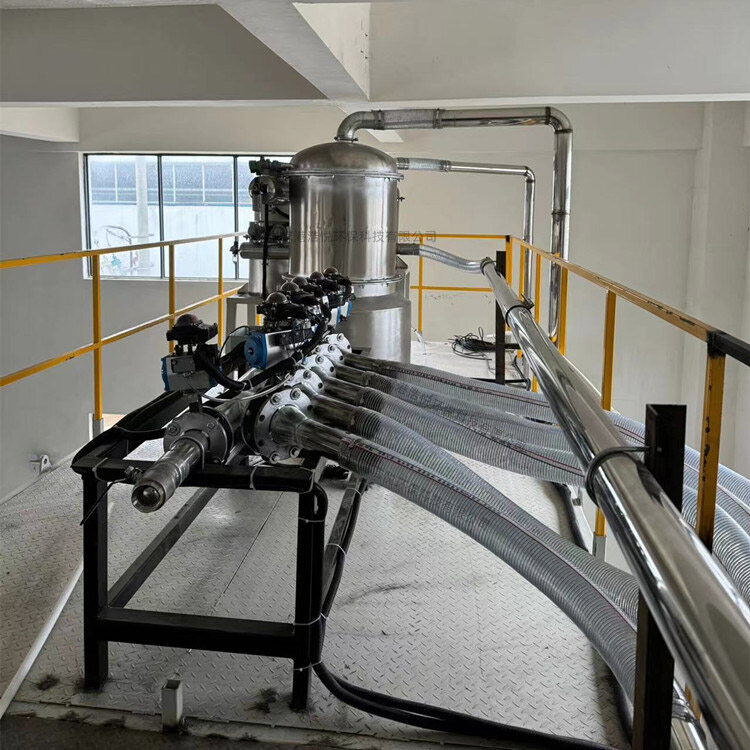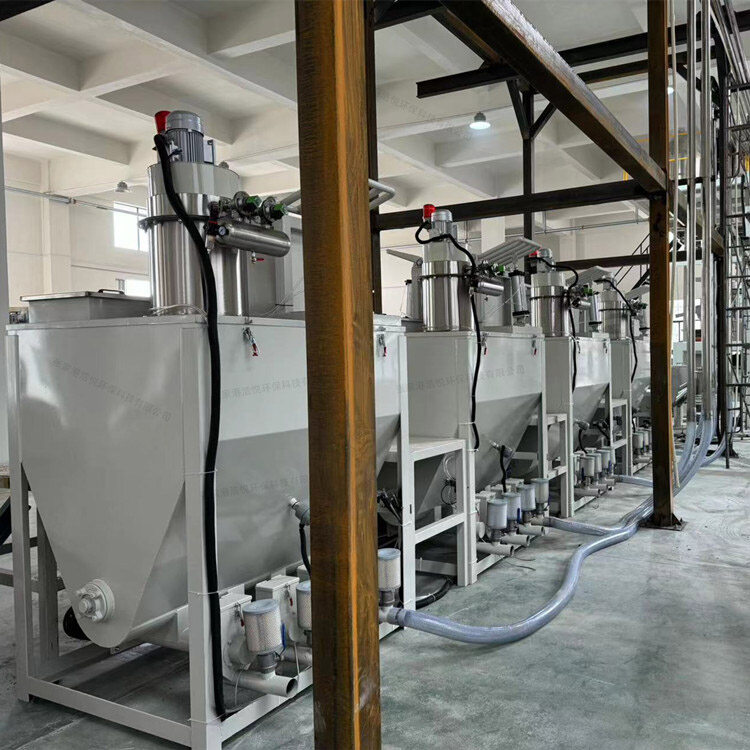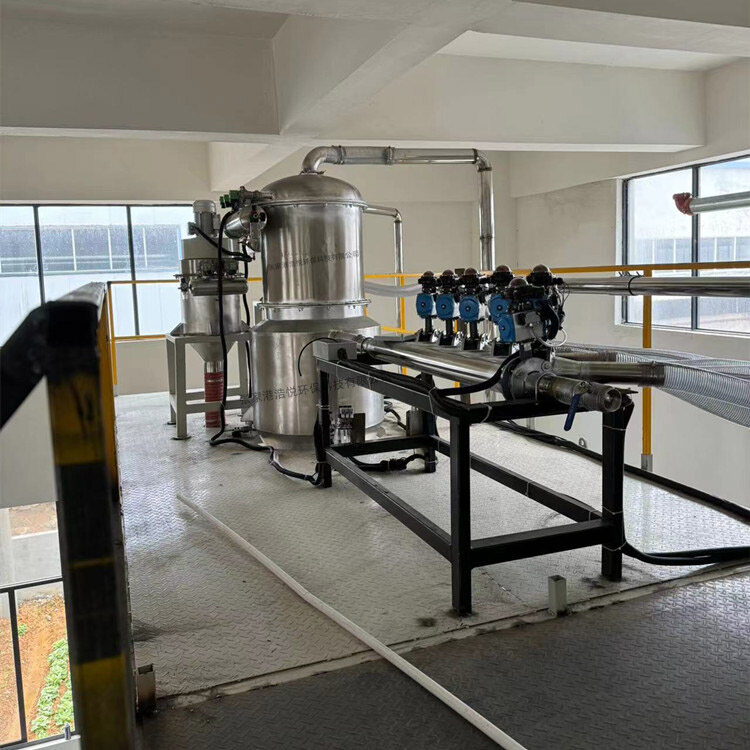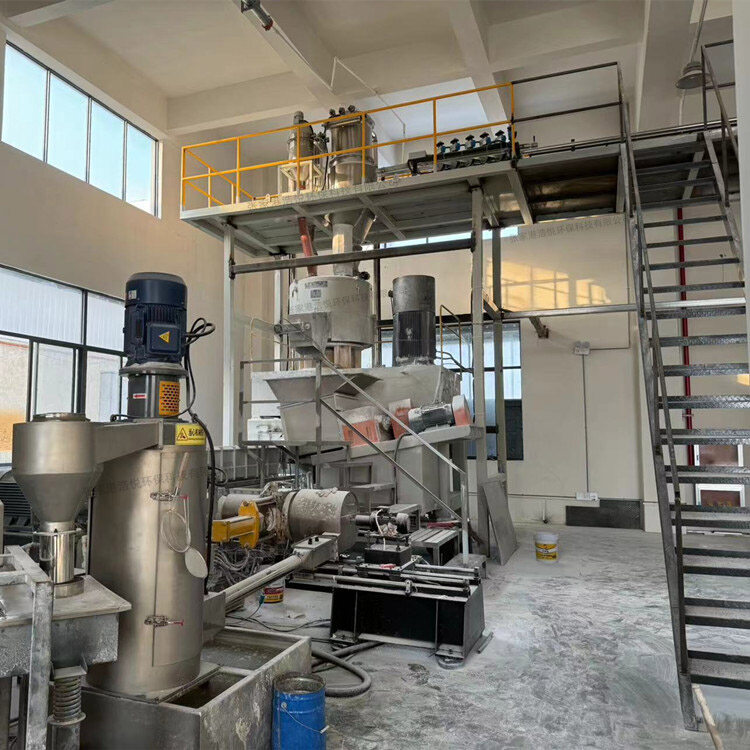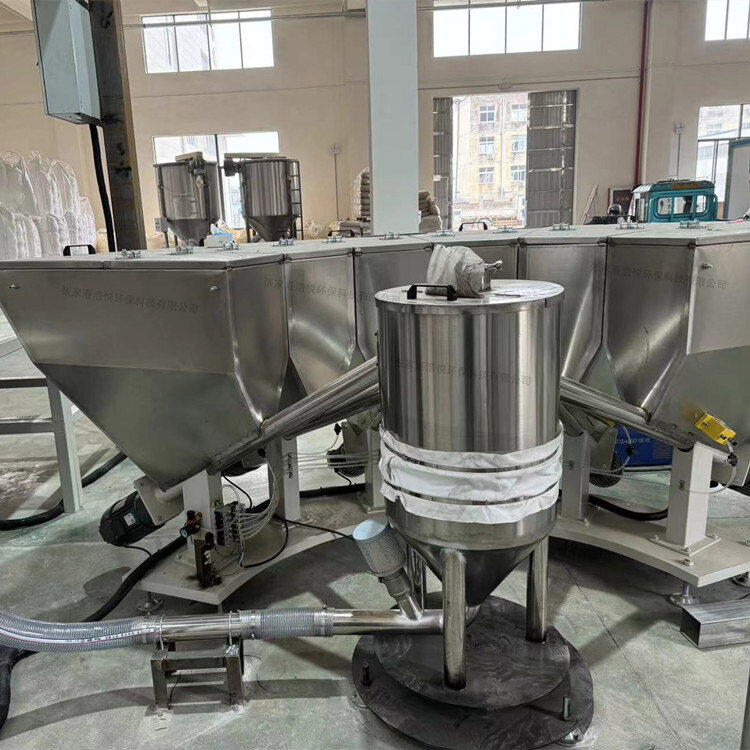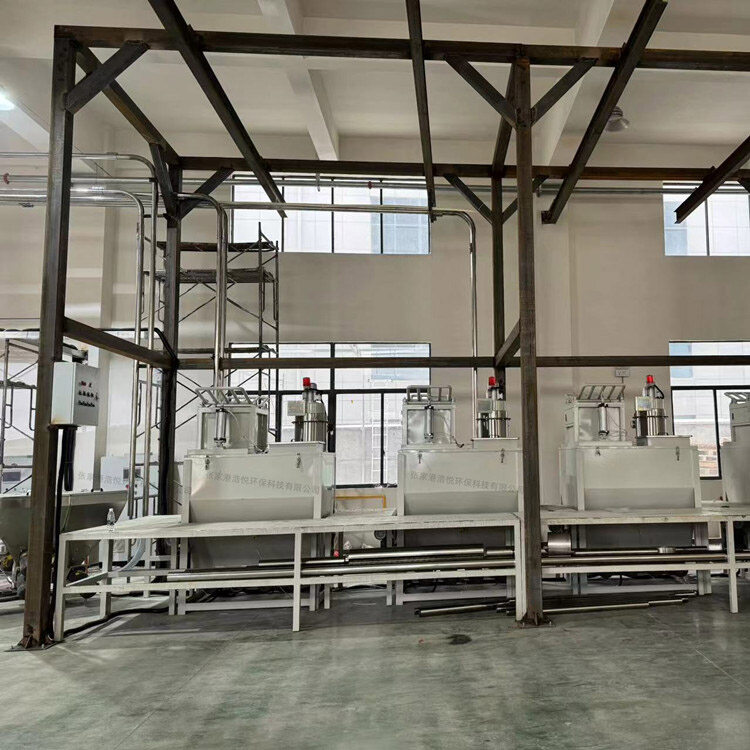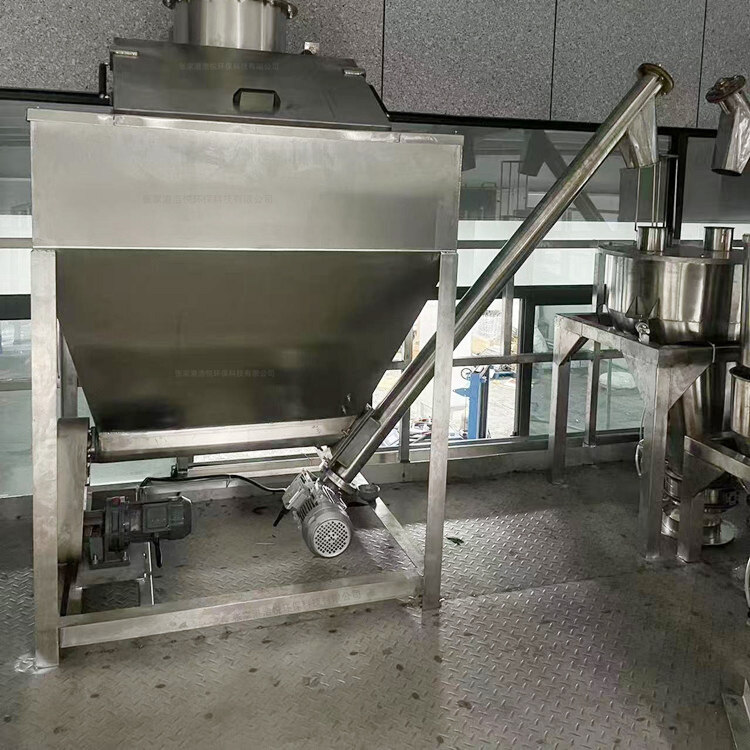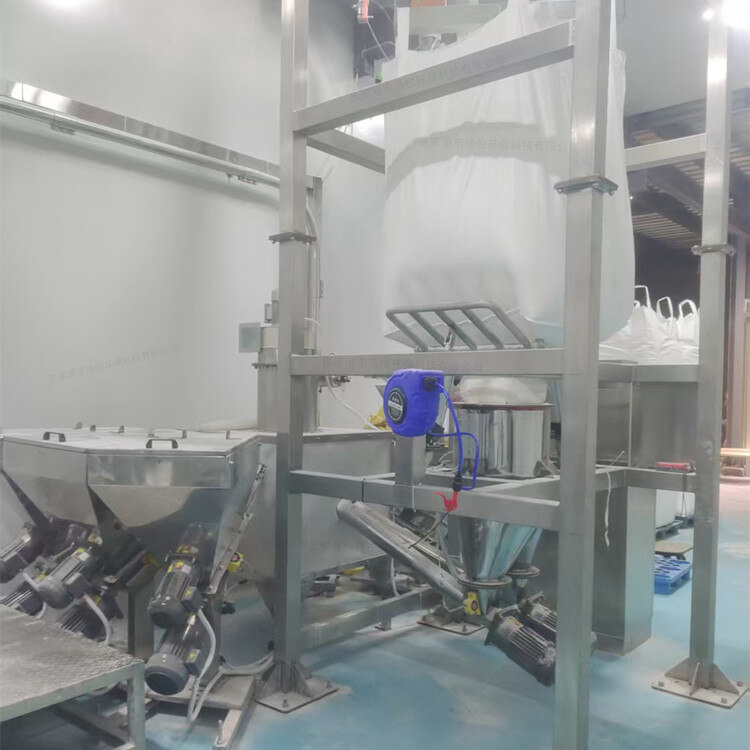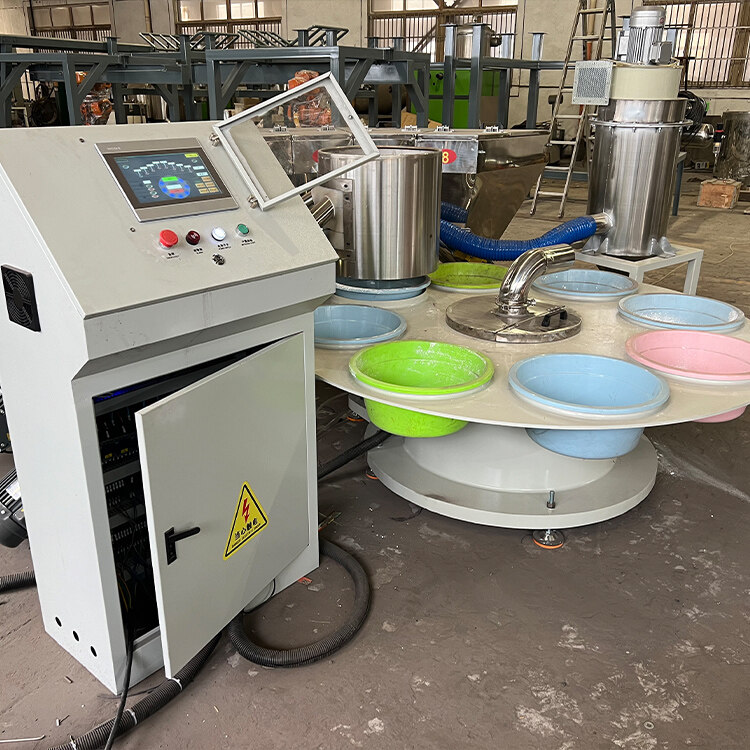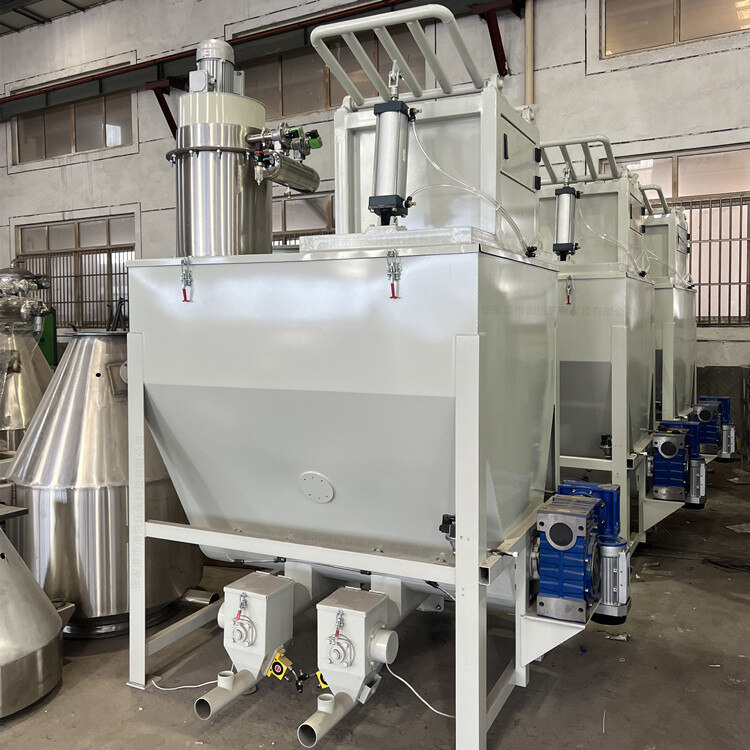- Introduction to automatic batching machine and fully automatic batching machine equipment
- The powder metering system tells you about the introduction of the mixing and drying machine
- 1000kg vacuum feeding machine
- Fully automatic small material batching system
- Research on Innovation of Automatic Weighing Machine Technology
- Design and operation of automatic batching system using PLC, industrial computer and frequency converter
Plastic Particle Production Line
- Category:other
- Hits:119次
- Release Date:2025-06-23
- Share:
- Inquiry
- Details
1、 System composition and core functions of plastic particle production line
Raw material pretreatment and precise batching
The production line first conducts pre-treatment such as drying and crushing on plastic raw materials to remove moisture and impurities, ensuring the quality of the raw materials. For example, for polyamide (PA) raw materials with strong moisture absorption, the moisture content needs to be reduced to below 0.1% through a dehumidification dryer. At the same time, automatic batching machines are used to accurately measure the main materials (such as polyethylene and polypropylene) and auxiliary materials (such as flame retardants, color masterbatch, antioxidants). Weight loss measuring scales or volumetric measuring instruments are used to achieve a measurement accuracy of ± 0.5% - ± 1%, ensuring stable particle performance.
Efficient extrusion and uniform plasticization
The core extrusion process is achieved through twin-screw extruders or single screw extruders. Twin screw extruders are widely used in the production of modified plastics due to their strong shear force and good mixing effect, which can evenly disperse additives such as fiberglass and nanomaterials in the matrix resin; Single screw extruders are suitable for conventional plastic granulation, with low cost and easy operation. The extruder heats the plastic raw material to a molten state through a zone temperature control system (accuracy ± 1 ℃), and achieves continuous plasticization under the push of the screw.
Diversified granulation and post-treatment
Granulation is a key process in the production line, and common methods include water-cooled extrusion granulation, underwater cutting granulation, and die surface hot cutting granulation. Water cooled strip granulation has low cost and is suitable for the production of ordinary plastic particles; The particles produced by underwater granulation have high roundness and no dust, and are commonly used in high-end engineering plastics; Hot cutting particles on the mold surface are suitable for thermosensitive plastics, which can reduce particle adhesion. After granulation, the particles are screened through vibrating screens and air separators to remove particles and impurities, and then cooled and dried to ensure that the particle performance meets the standards.
Intelligent Control and Quality Monitoring
The production line is equipped with a PLC control system and an industrial touch screen to achieve real-time monitoring and adjustment of parameters such as temperature, pressure, and screw speed. Some high-end production lines integrate online quality inspection equipment, such as laser particle size analyzer and melt flow rate meter, which can detect particle size distribution, melt flowability and other indicators in real time. Once an abnormality occurs, the system automatically alarms and adjusts process parameters to ensure product qualification rate.
2、 Analysis of Core Equipment in Plastic Particle Production Line
material handling equipment
Drying machine: Hot air circulation drying machine is suitable for low moisture absorbing materials such as PE and PP; The dehumidification dryer adopts molecular sieve adsorption technology, which can reduce the moisture content of PA, PC and other raw materials to below 0.02%.
Crusher: It adopts a blade or hammer structure to crush recycled or large raw materials to a particle size of 5-10mm. The blade material is wear-resistant tungsten steel, and the speed can reach 3000-6000rpm.
Ingredient mixing equipment
Automatic batching machine: precise weighing of multi-component materials through a weight loss measuring scale, capable of processing 8-20 types of materials simultaneously; Paired with a spiral feeder to achieve uniform conveying.
High speed mixer: The stirring blade speed inside the stainless steel container can reach 500-3000rpm, with a built-in heating/cooling jacket that can be adjusted within the range of 0-200 ℃ to ensure rapid and uniform mixing of materials.
Extrusion granulation equipment
Twin screw extruder: The length to diameter ratio (L/D) of the screw is usually 32-48, and it adopts a modular design, including a conveying section, a melting section, a mixing section, and an exhaust section; Threaded components (positive threads, kneading blocks) generate strong shear forces, achieving sufficient dispersion and plasticization of materials.
Granulator: The underwater granulation system consists of a die head, a cutting blade, and a water ring granulation chamber. The cutting blade speed can reach 3000rpm, and the particle size is controlled between 2-4mm. The water-cooled strip granulation is completed by cooling in a water tank and cutting with a granulator.
Post processing and testing equipment
Vibration screen: Screen particles through a 100-200 mesh sieve to remove non-conforming products; The wind separator uses wind power to separate light impurities.
Online detector: laser particle size analyzer measures particle size distribution with an accuracy of ± 1 μ m; The melt flow rate meter detects the flowability of plastic melt with an error of ± 0.5%.
3、 Typical process flow
Raw material pretreatment: Plastic raw materials are fed into a dryer to remove moisture, and the recycled materials are crushed by a crusher before entering the storage bin.
Accurate batching: The automatic batching machine weighs the main and auxiliary materials according to the formula, and transports them to the high-speed mixer through a screw conveyor for 5-10 minutes to mix evenly.
Melt extrusion: The mixed material enters the twin-screw extruder, melts and plasticizes at a high temperature of 200-300 ℃, and is extruded from the die by screw extrusion.
Granulation molding: The extruded strip or melt is cooled by water or air, and then cut into particles of standard size by a granulator.
Post processing and packaging: After screening and testing, the particles are quantitatively packaged by an automatic packaging machine and stored for sale.
4、 Application scenarios
General plastic production: producing general plastic particles such as PE, PP, PVC, etc., for the manufacture of films, pipes, injection molded products, etc.
Engineering plastic modification: Strengthening, flame retardant, and toughening modification of engineering plastics such as PA, PC, ABS, etc. to meet the high-performance requirements of automotive components and electronic appliances.
Recycled plastic processing: Recycling and processing waste plastics to produce recycled plastic particles, which are applied to low-end plastic products to achieve resource recycling.
Masterbatch manufacturing: mixing pigments with carrier resins to form granules, providing stable coloring effects for plastic products.
5、 Technological development trends
Intelligence and Digitalization: Introducing AI algorithms to optimize extrusion process parameters and simulating production line operation through digital twin technology; Utilize the Internet of Things to achieve remote monitoring and fault warning of devices.
Green and energy-saving: Developing low-energy extruder and granulation technology, using servo motor drive, which saves 30% -50% energy compared to traditional motors; Promote water recycling and utilization systems to reduce water resource consumption.
High performance and functionalization: research and development of new material production lines such as nanocomposites and bio based plastics; Enhance the adaptability of equipment to special processes such as microfoaming and supercritical fluid processing.
Modularization and Flexibility: Adopting modular design, supporting quick replacement of screws and molds, adapting to different plastic varieties and process requirements; Realize flexible production of multiple varieties and small batches.
As the core equipment of the plastic industry, the plastic particle production line is rapidly developing towards intelligence, greenness, and high performance, continuously promoting the high-end development of the plastic products industry and providing high-quality plastic basic materials for various fields.


